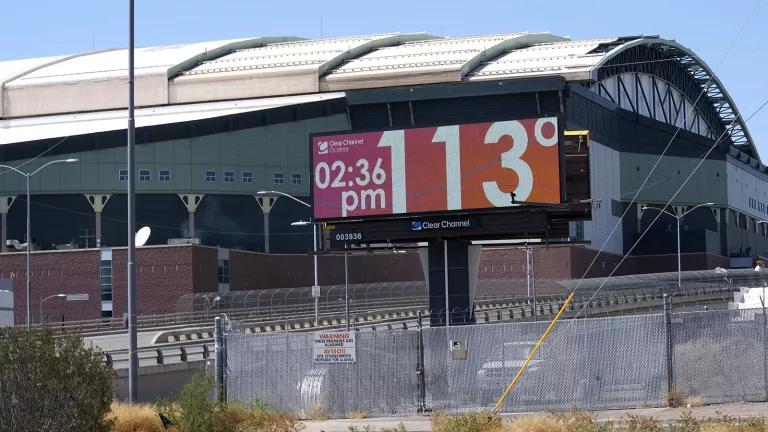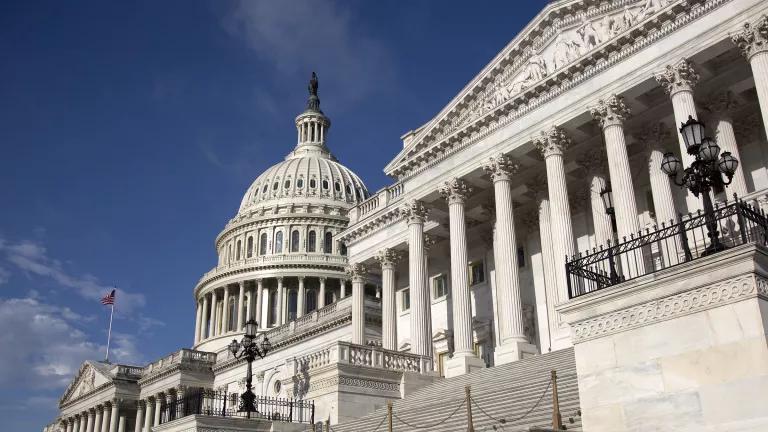Last Friday was World Water Day, a day set aside to focus attention on the importance of sustainable management of our drinking water and importantly, where that water comes from, throughout the world.
Today, on the heels of World Water Day, NRDC is announcing a major new partnership with water utilities across the country including Austin Water Utility and San Antonio Water System of Texas and American Water (NYSE: AWK), the nation's largest publicly traded water and wastewater utility company. NRDC, along with these utilities and with endorsements from the East Bay Municipal Utility District of California and the New York City Department of Environmental Protection, submitted a proposal to the American Water Works Association (AWWA) to revise national accuracy standards for new water meters to tackle the unnecessary waste of water from common household leaks. Household leaks can be found throughout a structure. Most leaks occur around toilets, faucets and showerheads that can drip due to worn out washers and gaskets. Homeowners and businesses can routinely look for these leaks and ensure tight fixture connections with easy and inexpensive tools like pipe tape and a wrench and replace the rubber flapper in toilets that run between flushes. The problem is, most people aren’t looking for these common leaks in the first place and a lot of water is being wasted.
How much water? The statistics are staggering. The EPA’s WaterSense Program estimates that more than 1 trillion gallons of water leak from U.S. homes each year. That’s drinking water that has been pumped, treated, and transported at incredible expense just to be wasted due to running toilets, dripping faucets or showerheads, and irrigation system leaks. Here in Los Angeles, that water may have come from as far away as the Sacramento-San Joaquin Delta or the Colorado River. Pumping water from vast distances also requires a great amount of energy that is wasted when we allow leaks to go unchecked.
Unfortunately, some meters are not sensitive enough to capture these leaks so the utility has no way of knowing exactly where the water is being wasted, which makes it nearly impossible to find and eliminate the leaks. Our proposal tackles unwarranted waste of resources from water leaks by enhancing AWWA meter performance requirements and test methods to arm water suppliers with improved technology to measure and charge for the water they produce while helping customers identify low flows, stop unnecessary leakage, and save water.
For information on how consumers will benefit from revised meter standards and what you can do to reduce leaks in your home, visit my colleague Ed’s blog. For the wonkier stuff, keep reading.
The standards for meter accuracy haven’t changed much in the last 100 years. Standard specifications for water meters were first adopted in 1921, and even then AWWA recognized the need for meters to measure flows below the normal operating range and thus specified a requirement for registration accuracy for minimum test flows. While the minimum registration accuracy has improved slightly (it changed from 90% in the 1921 standard to 95% in 1961), the minimum test flow rates have yet to be updated to reflect advances in meter technology. There are plenty of meters out there that can accurately measure low flows, but under the current standards they are lumped together with meters that can barely meet the 100 year old requirements. It’s time to change that.
So, what are the current standards & how much water can this proposal help save?
A common meter size for a new single family home is ¾ inch, which is required to achieve 95 percent accuracy for a minimum test flow of 1/2 gallon per minute. To put that in perspective, that flow rate would fill a bathtub in about 1.5 hours. While most meters perform relatively well at this flow rate, a recent study by the Water Research Foundation showed huge variability in the accuracy of meters for flows below current minimum test flows. For one of the most common types of meters, a test of 1/8 gallon per minute resulted in seven out of thirty meters capturing less than 1% of the volume. In just one home, nearly 180 gallons that could go undetected every day. Now imagine that a utility had purchased 1,000 or 10,000 of these poor performing meters!
But that’s just free water for you, right? Nope. The cost of producing and delivering that water gets distributed to all of the utility’s customers. And these water losses also often result in higher and more frequent rate increases.
This issue is only going to get worse if we don’t take action now. Due to outdated methods for sizing meters that don’t take into account reduced flows from efficient toilets, showers, faucets, dishwashers and clothes washers, and recent requirements for the installation of fire sprinklers in many states, utilities are regularly installing oversized meters in homes. The larger the meter, the less likely it is to pick up on low flows, or leaks, which is the bigger problem.
Utilities are making significant investments in technologies like Automated Meter Reading (AMR) and Advanced Meter Infrastructure (AMI) in an effort to reduce water losses. Rather than having a utility worker come read the water meter at your house once a month, the information can be transmitted to a central computer in intervals as small as every minute which can help utilities identify potential customer leaks. But AMR and AMI are only as effective as the meter measuring the flow. These proposed revisions to meter standards will ensure that utilities are supplied with more accurate water meters that can better detect the most elusive of hidden leaks. Stronger accuracy standards will lead to the widespread use of these better, more accurate meters, and major water savings will follow.
The bottom line is that fixing leaks:
- Will save you money. The more water we save, the less likely our water utilities will have to purchase expensive water from new sources (like paying farmers not to farm), or build new water and wastewater infrastructure; costs that are eventually passed on to customers.
- Is good for the environment. The less water utility companies have to transport water to your dripping faucet, constantly running toilet, or other hidden leaks the more water and energy is saved and carbon emissions reduced.
- Saves our limited resources. Many parts of the country are experiencing historically severe droughts. Only using the water we need and conserving those resources will protect our water sources in the long-run.



